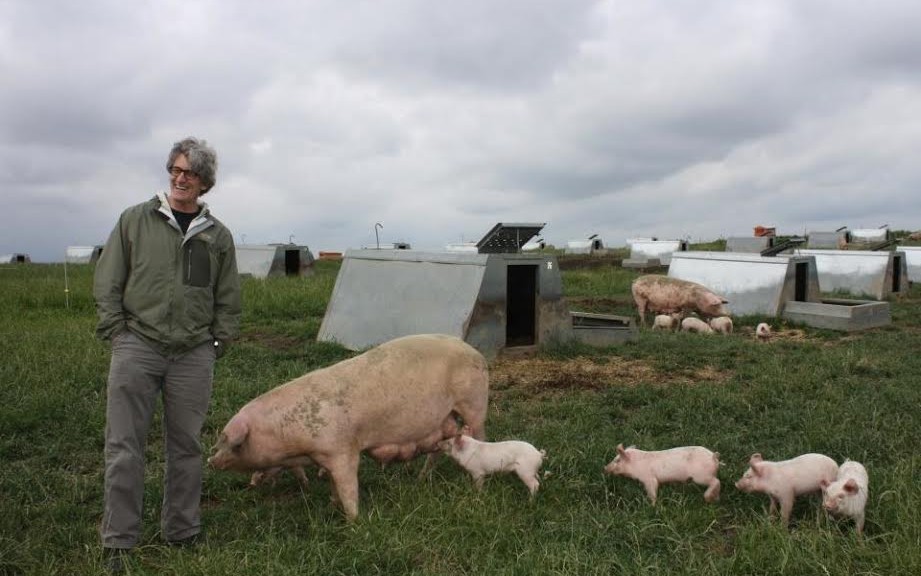When Herb and Kathy Eckhouse decided to locate their acclaimed cured ham house, La Quercia, in Norwalk, Iowa, they didn’t mean it as a statement. They wanted to make a positive impact in the place they’d long ago decided to raise their family. “We wanted to do something for Iowa. Something we can be proud of from this amazing bounty.”
If you know anything about the current state of hog farming it’s hard to think of their work without considering the statement it’s making.
Herb carefully selects hogs from folks who practice old-fashioned, industry-rattling farming practices. No sub-theraputic antibiotics. No hormones. Access to the out-of-doors. A breed palate that moves away from the low-fat, fast-growing, disease-prone standard white-bread pig. Mixed grain feed that doesn’t rely on Iowa’s most contentious crop, genetically modified corn.
Why does any of this matter?
The industry standard today is big hog farms that feed a daily dose of antibiotics to confined pigs that can’t turn around in their pens and never see daylight in the giant barns where they’re housed by the thousands. The folks behind these operations will tell you that there’s no other way to raise pigs efficiently for all the people who want to eat pork. They’ll also tell you the antibiotics are necessary and safe and there’s nothing to worry about, that calls for their elimination are alarmist. I don’t agree with any of that story, but let me just talk about the problem with antibiotics for a moment. Being a firm believer in evolution, I have no doubt that the pathogens facing a constant wall of antibiotics will find a way to climb over it. The problem is that these antibiotics are the same ones we use to keep ourselves healthy against the same pathogens. When we lose them, we lose too.
Herb certainly isn’t the first to be working with humanely raised pork. But, in my view, he’s the first to be working at this kind of scale, at least in America. Since U.S. law prohibits us from importing most cured meats—Prosciutto di Parma being a notable exception—American hog raising practices have a huge effect on the kind of cured meats we eat. There are a growing number of small charcuterie houses who make great salami and other cured meats from pork raised humanely. But salami cures in a matter of weeks. It takes almost a year to cure a ham. With that much meat literally tied up, it’s difficult to make the business math work unless you work at a large scale.
La Quercia’s main aging room has over sixty thousand hams.
And then you can add in another few thousand in the other aging rooms—charmingly named “winter” and “spring” since they replicate the weather a ham would encounter if it was aged at ambient temperatures in sync with the seasons. The scale is something that he’s even surprised at. “It always freaks me out. I used to make them in my basement. I started out with six hams.”
And that’s just the ham. There’s tons more pork aging in the form of loins, pancetta, jowls, and so on. Then there’s salami. A few years back, Herb started working to develop a salami with a softer texture and big, meaty flavor that wasn’t clouded with spices. After six months of playing with the recipe and another year sorting out the production method, the Borsellino was born. It’s sweet, porky, even a little earthy, and super easy to snack on. The experiment took off, and today Herb produces a slew of fantastic salamis.
Add it all up and it’s easy to see what it means to Iowa pig farming. Herb and Kathy have helped to create a national market for cured ham made from humanely raised pigs. Their hams are on the menus of great restaurants and hanging above great deli counters across the country. Their salamis fill our gift baskets and the backpacks of hikers and picnickers across the country. Iowa farmers now have a willing buyer when they raise a pig in a way that takes extra work and extra expense. Thousands of pigs now enjoy a completely different life thanks to the standards La Quercia demands. And Iowa is increasingly finding itself in the vanguard of old-fashioned, full-flavored hog farming.

